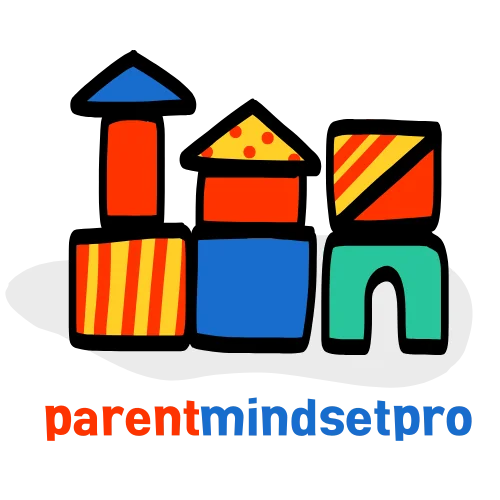In a world where kids are glued to screens, wouldn’t it be great to see them building robots instead? STEM classes for kids are popping up everywhere, and they’re more than just a fun way to spend an afternoon. They’re the secret sauce to sparking creativity and critical thinking in young minds.
Table of Contents
ToggleImportance Of STEM Education For Kids
STEM education plays a crucial role in shaping young minds. Engaging in STEM activities nurtures essential skills and fosters a love of learning.
Benefits Of STEM Learning
STEM learning offers various benefits that enhance children’s development. Improved problem-solving abilities emerge as kids tackle real-world challenges. Increased creativity follows when they build projects and engage in experiments. Collaboration skills develop as students work in teams on projects. Understanding technology becomes more accessible, equipping kids for a tech-driven future. Lastly, heightened interest in scientific fields encourages pursuit of STEM-related careers.
Developing Critical Thinking Skills
Critical thinking skills flourish through STEM education. Students learn to analyze information by experimenting and drawing conclusions. They evaluate solutions and choose the most effective ones through hands-on activities. More importantly, STEM classes encourage asking questions, leading to deeper understanding. Each lesson helps children develop logical reasoning, an essential life skill. Exposure to various concepts invites different perspectives, promoting open-mindedness.
Types Of STEM Classes Available

STEM classes for kids encompass a wide range of subjects designed to foster curiosity and problem-solving skills. Parents can find various options tailored to different interests and age groups.
Science Classes
Science classes engage students in exciting experiments and explorations. These classes cover topics like biology, chemistry, and physics, encouraging children to ask questions and seek answers. Through hands-on experiments, kids learn about ecosystems or chemical reactions. Engaging activities, such as nature walks or simple lab experiments, make learning dynamic and enjoyable.
Technology Classes
Technology classes introduce children to important digital skills. Topics include coding, app development, and computer science fundamentals. These classes often use interactive tools and platforms to enhance learning. Children learn to create games or websites, empowering them with valuable skills for the future. Exposure to technology prepares students for careers in an increasingly tech-driven world.
Engineering Classes
Engineering classes promote creativity through design and construction projects. Students tackle real-world problems, working with materials to build bridges or create simple machines. Collaboration is key, as children learn to work in teams, sharing ideas and solutions. Practical tasks foster critical thinking, allowing kids to understand the principles of engineering in a fun and hands-on environment.
Mathematics Classes
Mathematics classes focus on building foundational skills essential for various STEM fields. Topics cover geometry, algebra, and data analysis. Fun, interactive games and challenges help students master concepts while developing logical reasoning. Engaging activities, such as math puzzles or real-world problem-solving scenarios, ensure that children see the practical applications of math in everyday life.
How To Find STEM Classes For Kids Near Me
Finding STEM classes for kids involves exploring various avenues, including online platforms and local resources. Parents should consider the following options.
Online Resources
Search for online platforms that offer virtual STEM classes. Websites like Khan Academy and Codecademy provide engaging content in subjects like coding and math. Check community forums and social media groups focused on local educational opportunities. They often share recommendations for online programs tailored to different age groups and interests. Many organizations even offer free resources and tutorials, making it easier for parents to access quality education.
Local Community Centers
Visit community centers for hands-on STEM programming. Many centers host structured classes for kids, covering areas like robotics and science experiments. Check their schedules for events or workshops aimed at various age groups. Staff members can provide valuable information about current offerings and upcoming programs. Engaging with local experts helps families discover unique opportunities to encourage children’s interests in STEM fields.
Schools And Educational Institutions
Inquire with local schools about STEM classes integrated into their curricula. Many schools partner with organizations to provide after-school programs focused on science and technology. Parents should consider attending school open houses or meetings to gather insights. Additionally, educational institutions often hold summer camps or seasonal workshops that emphasize STEM learning. These programs can deepen students’ understanding while fostering connections with peers interested in similar subjects.
Factors To Consider When Choosing A STEM Class
Choosing the right STEM class for kids involves several important factors. Parents should assess various elements to ensure a positive experience and effective learning.
Age Appropriateness
Selecting STEM classes appropriate for specific age groups is crucial. Classes designed for younger children emphasize interactive play, engaging their curiosity through hands-on activities. For older kids, advanced topics become more relevant, such as robotics and coding, providing challenging material suitable for their developmental stage. Matching age with the content ensures students remain interested and can grasp complex ideas comfortably. Parents must consider both intellectual and emotional maturity when choosing.
Curriculum And Teaching Methods
Evaluating curriculum and teaching methods helps in identifying quality programs. An effective STEM class integrates inquiry-based learning, encouraging students to explore and experiment. Classes should focus on practical applications of science, technology, engineering, and mathematics concepts. Innovative teaching methods, like project-based learning, stimulate creativity and enhance problem-solving skills. Assessing the alignment of curriculum with educational standards can provide additional assurance of quality.
Class Size And Instructor Qualifications
Class size significantly impacts the learning experience. Smaller class sizes often lead to more personalized attention and better student engagement. This fosters a supportive environment where kids can ask questions freely. In addition, instructor qualifications play a vital role in the effectiveness of STEM education. Trained educators with experience in STEM fields can offer valuable insights. Prioritizing classes led by qualified instructors ensures children receive instruction from knowledgeable individuals, enhancing their learning journey.
Finding the right STEM classes for kids can open doors to a world of creativity and innovation. These classes not only enhance problem-solving skills but also inspire a lifelong love of learning. By exploring local resources and considering key factors like age appropriateness and class size, parents can ensure their children receive the best possible educational experience. Encouraging young minds to engage in STEM activities today prepares them for a successful future in an increasingly tech-driven world. Investing in STEM education is a step toward nurturing the next generation of thinkers and creators.
